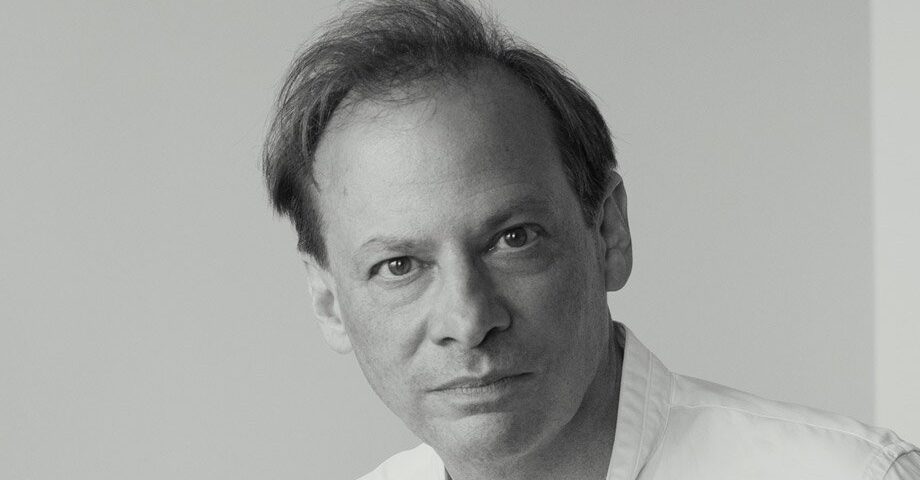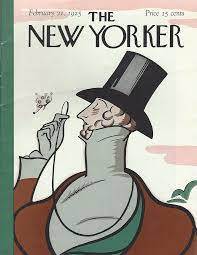The BEST: Adam Gopnik’s Essays

Summary: Adam Gopnik has written for The New Yorker since 1986 and currently serves as one of the magazine’s best-known staff writers. His essays cover famous writers (Proust, Diderot, Henry James), modern American history (the railroad system, the situation of Blacks after the Civil War), military history (World War I, espionage, the Holocaust), and more (coffee, parenting).
Why this is The BEST: Before addressing the specifics of Gopnik’s work, the medium merits discussion. Essays served as an important conduit for the thinking of Addison and Steele, Samuel Johnson, and George Orwell. More recently, Cynthia Ozick, David Foster Wallace, and Marilynne Robinson all utilized this form to great advantage. A book of essays allows for a greater variety of topics than the average tome. Additionally, the potential brevity of each individual essay enables even those contemporary readers with diminished patience to encounter profound thought without committing major amounts of time to the endeavor.
Gopnik applies keen insight to an impressively wide range of issues. In trying to understand the mass incarceration rate in America, he highlights the role of prosecutors who threaten harsh sentences and effectively coerce defendants into plea bargaining agreements. He also notes how older criminals tend to not return to crime; therefore, their release would not endanger society. Gopnik’s ideas about prison reform should impact on our communal discourse. Our rabbinic tradition incorporates compassion for criminals (Sanhedrin 45a) and a modern application would affect our prison system. His essay on railroads outlines the impact this new mode of travel had on the Civil War (the North benefitted from superior ability to transport troops). A column on dictators points out that the communists preferred communicating via the written word whereas the fascists of Nazi Germany liked the electrical and emotional excitement of oral communication (Marxists are more theory-driven; fascists like the effect of charisma on a mob).
 In an essay about terror, Gopnik rejects a common assertion that terrorizing is rooted in the dehumanization of the other. On the contrary, “we don’t humiliate vermin, or put them through show trials, or make them watch their fellow-vermin die first. The myth of mechanical murder is almost always only that.” This works against Hannah Arendt’s bureaucratic portrayal of the Nazi cruelty machine.
In an essay about terror, Gopnik rejects a common assertion that terrorizing is rooted in the dehumanization of the other. On the contrary, “we don’t humiliate vermin, or put them through show trials, or make them watch their fellow-vermin die first. The myth of mechanical murder is almost always only that.” This works against Hannah Arendt’s bureaucratic portrayal of the Nazi cruelty machine.
When discussing raising children, Gopnik cites the words of the Russian philosopher Alexander Herzen after the tragic death of a child. “Because children grow up, we think a child’s purpose is to grow up. But a child’s purpose is to be a child. Nature doesn’t disdain what only lives for a day. It pours the whole of itself into each moment.” While this thought does not neutralize the unbearable pain of losing a child, it can provide some degree of perspective and comfort.
In addition to acute analysis, Gopnik writes beautifully; in fact, he could inspire us all to write with greater flair and precision. To illustrate, I will step aside and let Gopnik’s magnificent prose do the talking rather than spoil it with my paraphrase.
On the difference between the massive egos of Voltaire and Denis Diderot:
Voltaire’s temptation with Fredrick is easy to understand: praise would get you anywhere with Voltaire. Diderot was a more self-aware man; with him, praise would merely get you almost anywhere. His sympathies were, it’s true, limited to people like him; Voltaire’s were limited to people who liked him.
On the difference between academic and popular historians:
This is why the greatest divide among historians is between the academics who tend to see people as points of compressed social forces and those popular historians, chiefly biographers, who see the actors as nearly the whole of the story. The academics study the tides of history while the popular historians go out fishing to find (and tag) the big fish that presumably make the ocean worth watching. The tidalists have the tenure, but the fishermen sell all the books.
On the difference between teachers and gurus:
It is said sometimes that the great teachers and mentors, the rabbis and gurus, achieve their ends by inducting the disciple into a kind of secret circle of knowledge and belief, make of their charisma a kind of gift. The more I think about it, though, the more I suspect that the best teachers – and, for that matter, the truly long-term winning coaches, the Walshes and Woodens and Weavers – do something else. They don’t mystify the work and offer themselves as a model of rabbinical authority, a practice that nearly always lapses into a history of acolytes and excommunication. The real teachers and coaches may offer a charismatic model – they probably have to – but then they insist that all the magic they have to offer is a commitment to repetition and perseverance. The great oracles may enthrall, but the really great teachers demystify.They make particle physics into a series of diagrams that anyone can follow, football into a series of steps that anyone can master, and art into a series of slides that anyone can see. A guru gives us himself and then his system; a teacher gives us his subject, and then ourselves.
This final example, which combines superb writing with penetrating wisdom, has powerful resonance for our community. We have experienced too many examples of charismatic rabbis who sexually abuse, take financial advantage of, or simply dominate and manipulate their disciples. Even when the gurus do not directly harm their flock, the resultant dependence such figures generate is itself problematic in the extreme. Are the congregants turning to God or to their flesh and blood guide? Though preventing these phenomena requires a multi-pronged effort, treasuring teachers over gurus is quite a good start.
This erudite polymath, and his elegant essays, remain a source of astute acumen.
Yitzchak Blau, whose own learned essays can be sampled here, is Rosh Yeshivat Orayta and an Associate Editor of TRADITION. Click here to read about “The BEST” and to see the index of all columns in this series.

